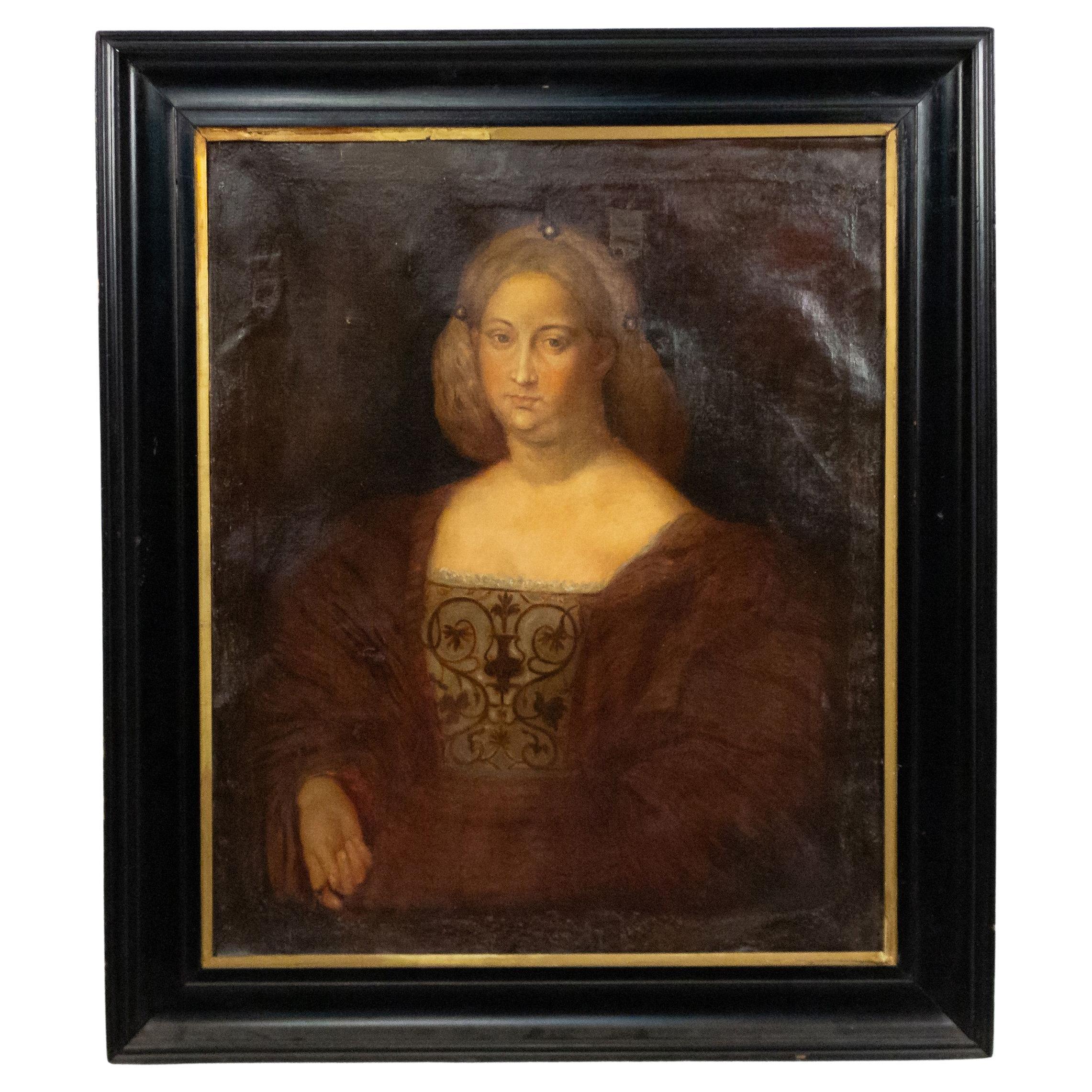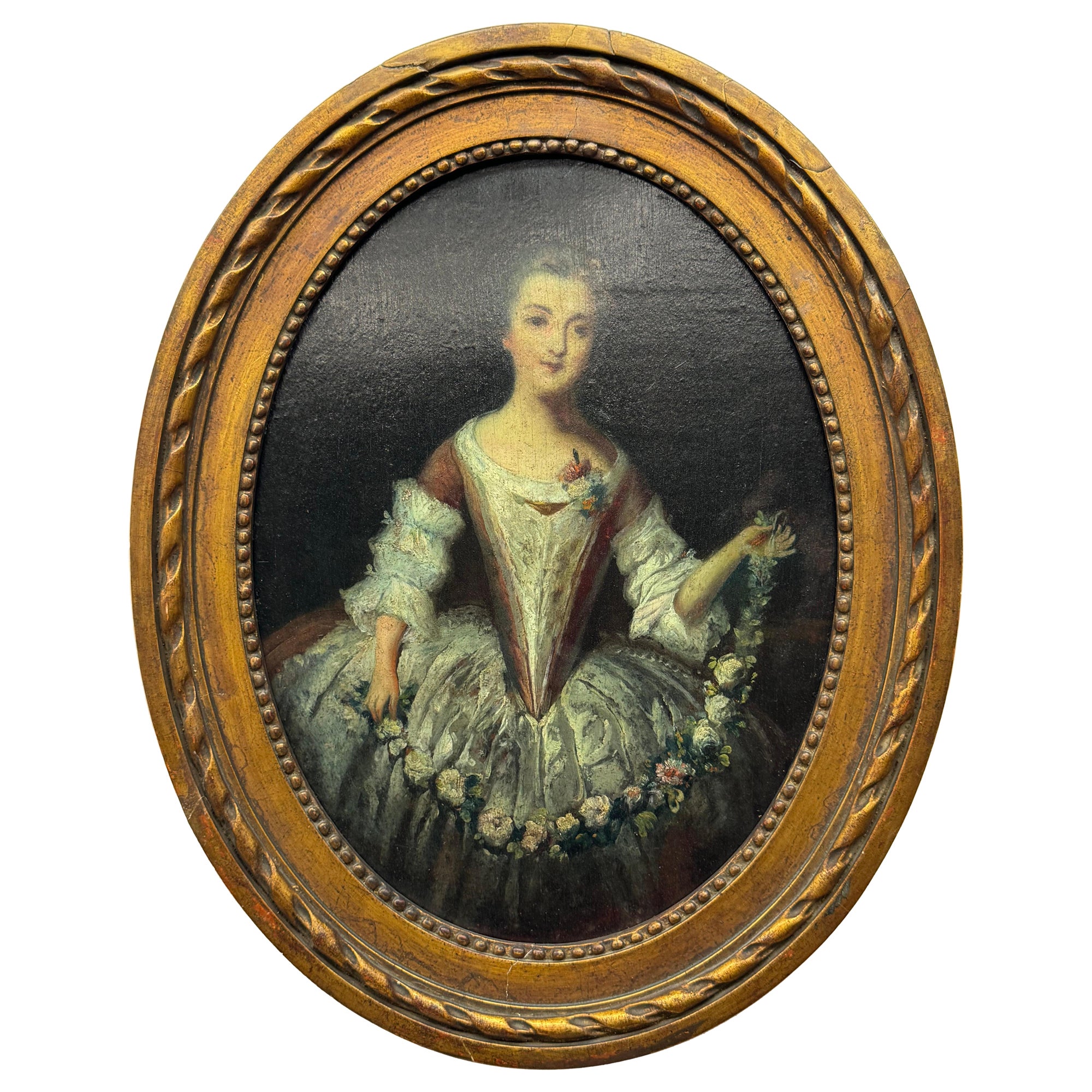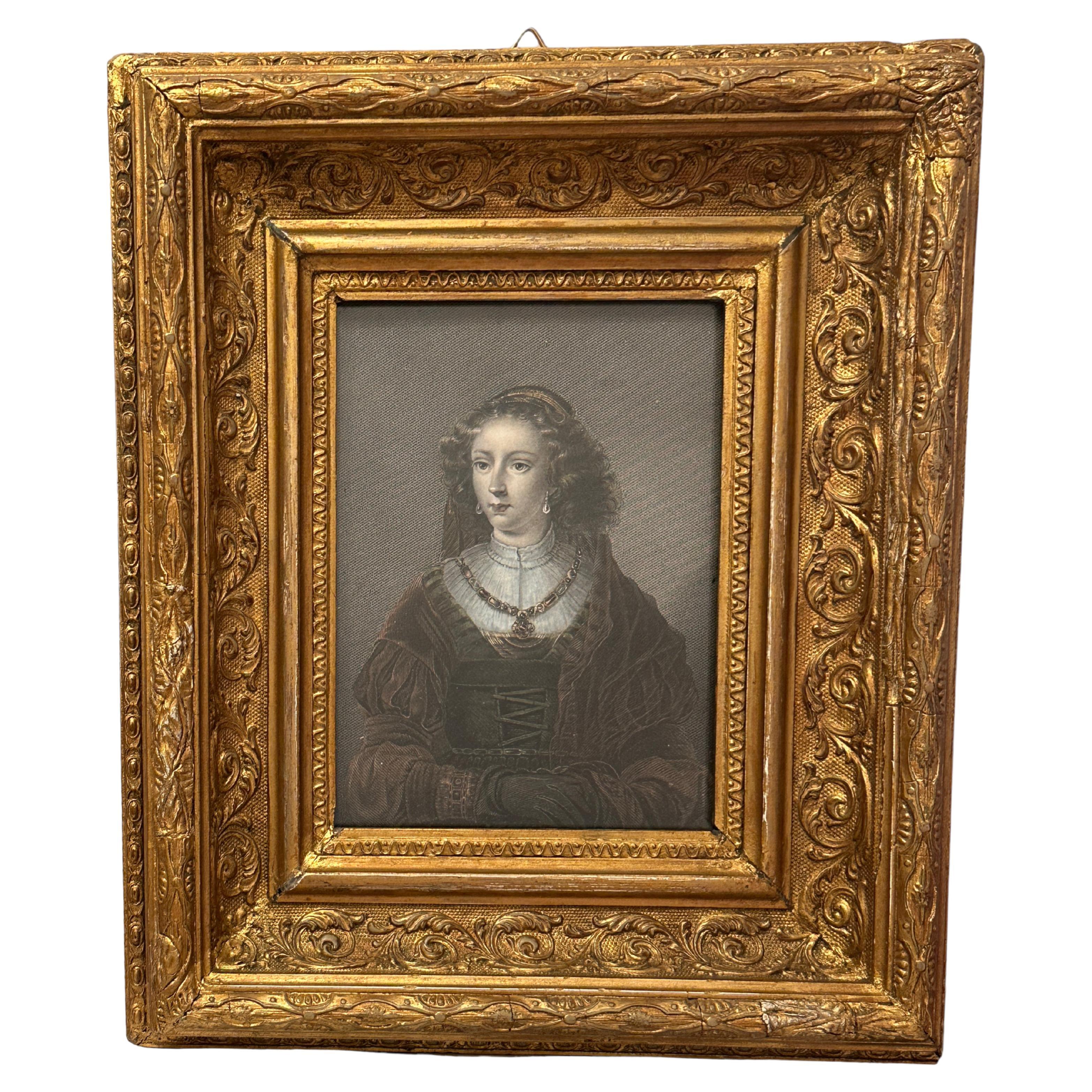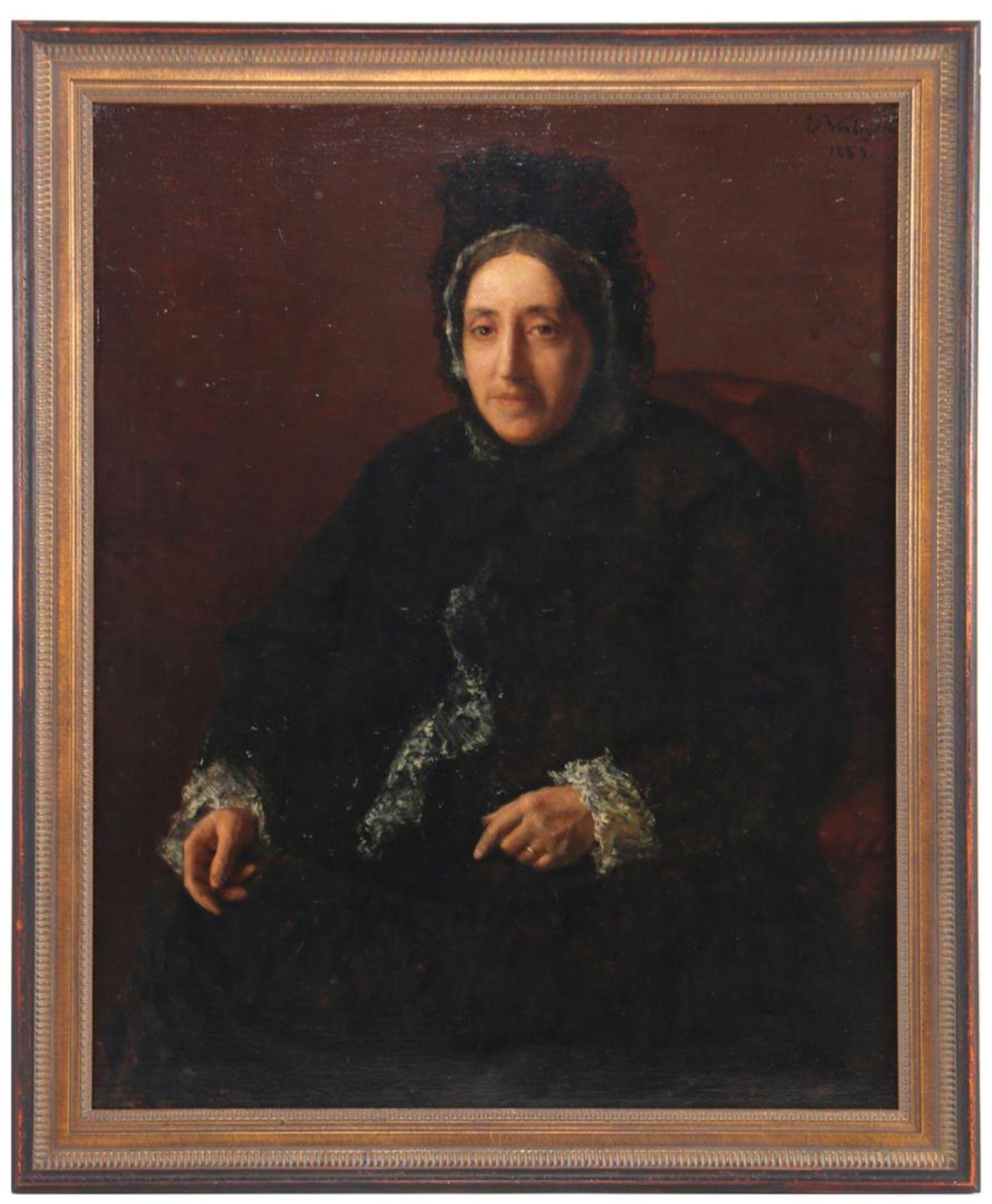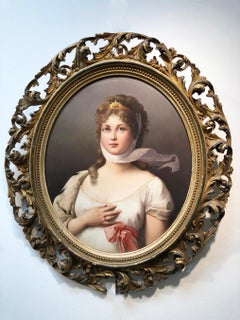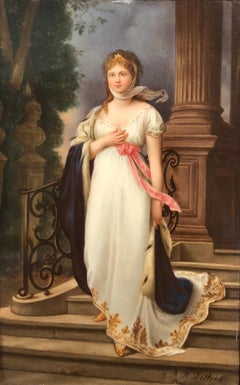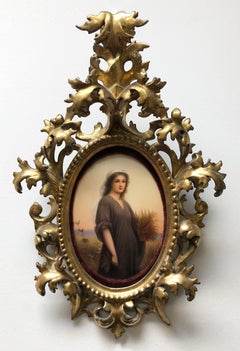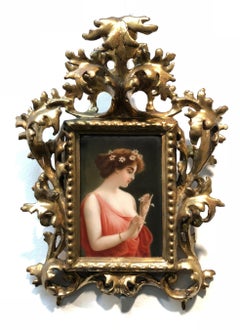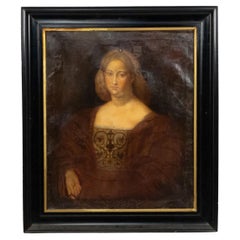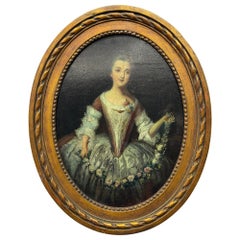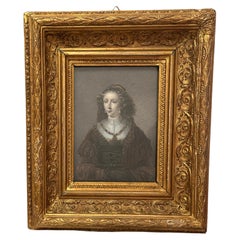Items Similar to Portrait of Margaret van Eyck
Want more images or videos?
Request additional images or videos from the seller
1 of 6
Samuel Arlent EdwardsPortrait of Margaret van Eyck
Price Upon Request
Price Upon Request
Price Upon Request
Price Upon Request
Price Upon Request
Price Upon Request
Price Upon Request
Price Upon Request
Price Upon Request
Price Upon Request
About the Item
A mezzotint by Samuel Arlent Edwards after the 1439 oil on wood painting by the Early Netherlandish master Jan van Eyck, titled, Portrait of Margaret van Eyck. The print is signed to the lower right margin. The image depicts the van Eyck’s wife, clothed in a red robe lined in squirrel fur, wearing her hair in a traditional and fashionable way with two small horns that are held together by hairnets with checkered motifs, draped in a linen veil. She wears a ring on her right hand.
- Creator:Samuel Arlent Edwards (1861 - 1938, British)
- Dimensions:Height: 14 in (35.56 cm)Width: 11 in (27.94 cm)
- Medium:
- Period:
- Condition:Good to fair condition. Please inquire if you would like to see more detailed images.
- Gallery Location:Missouri, MO
- Reference Number:1stDibs: LU74732252143
About the Seller
5.0
Vetted Professional Seller
Every seller passes strict standards for authenticity and reliability
Established in 1970
1stDibs seller since 2017
156 sales on 1stDibs
Typical response time: Several days
- ShippingRetrieving quote...Shipping from: Missouri, MO
- Return Policy
More From This Seller
View AllQueen Louise
By Königliche Porzellan-Manufaktur (KPM)
Located in Missouri, MO
KPM Porcelain
"Queen Louise" c. 1900
Original hand-painted KPM Porcelain
approx. 14 x 11 inches
approx. 21 x 15 inches framed
Since 250 years, the royal ...
Category
Late 19th Century Victorian Figurative Paintings
Materials
Porcelain, Oil
Price Upon Request
Queen Louise
By Königliche Porzellan-Manufaktur (KPM)
Located in Missouri, MO
KPM Porcelain
"Queen Louise" c. late 19th century
Original Hand-Painted Porcelain
Signed "R. Dittrich"
Since 250 years, the royal sceptre brand stands fo...
Category
Late 19th Century Victorian Figurative Paintings
Materials
Porcelain, Oil
Price Upon Request
Ruth
By Königliche Porzellan-Manufaktur (KPM)
Located in Missouri, MO
KPM Porcelain
"Ruth" c. 1900
Original hand-painted KPM Porcelain
In Original Gilded Florentine Frame
7 x 4 (16 x 9 framed)
Since 250 years, the royal sceptre brand stands for finest...
Category
Late 19th Century Victorian Figurative Paintings
Materials
Porcelain, Oil
Price Upon Request
Marguerite
By Königliche Porzellan-Manufaktur (KPM)
Located in Missouri, MO
Marguerite
Hand Painted Porcelain
w/crown stamp #107
Signed "Wagner"
Original Gilded Florentine Frame
approx 6 x 4 inches /approx 14 x 8 inches framed
Since 250 years, the royal sc...
Category
Late 19th Century Victorian Figurative Paintings
Materials
Porcelain, Oil
Price Upon Request
Tshusick, An Ojibway Woman
By McKenney & Hall
Located in Missouri, MO
Lithograph with original hand color.
Sheet size: 18.5 x 13.25 inches.
Framed Size: 24 x 20 3/8 inches
Date : c. 1836-44
Mckenney and Hall's hand colored lithographs remain some of...
Category
1830s American Realist Portrait Prints
Materials
Lithograph
Épanouissement
By Königliche Porzellan-Manufaktur (KPM)
Located in Missouri, MO
KPM Porcelain
After Angelo Asti (French, 1847-1903)
"Épanouissement" c. 1900
With Original Gold Gilded Frame
Image Size: approx. 6 x 4 inches
Framed Size: approx. 9 x 6 inches
Eve...
Category
Late 19th Century Victorian Figurative Paintings
Materials
Porcelain, Oil
Price Upon Request
You May Also Like
19th Century Oil Portrait of an English Renaissance Lady Framed
Located in Queens, NY
English Renaissance style (19th cent) ebonized framed oil painting portrait of 17th century lady in brown dress with scroll design.
Category
Antique 19th Century Renaissance Paintings
Materials
Paint
Samuel Seeberger - Portrait of Louise-Marie of France
By Samuel Seeberger
Located in San Francisco, CA
Samuel Seeberger(French) Portrait of Louise-Marie of France
After Jean-Marc Nattier
Oil on wood panel
11.5" x 15.5" unframed, 15.5" x 19.5" framed
Category
Early 20th Century French School Portrait Paintings
Materials
Oil, Wood Panel
Late variant of Portrait of Portrait of a Woman by Rogier van der Weyden
Located in New York, US
This late variant of "Portrait of a Young Girl" is a small oil-on-oak panel painting by the Early Netherlandish painter Petrus Christus. Completed ...
Category
Late 20th Century Portrait Paintings
Materials
Oak, Oil
Framed German Hand Colored Stealing Engraving Portrait of a Noble Lady, 1840s
Located in Nuernberg, DE
An extraordinary Original stealing engraving of the royal gallery in Munich and Schleissheim, hand-colored.
Beautiful hand crafted gilded Frame. Dated at the backside with a label fr...
Category
Antique 1840s German Baroque Decorative Art
Materials
Glass, Wood
19th century Portrait of a Lady, Attributed to Sir Frank Dicksee
Located in York, GB
Portrait of a very attractive Lady, head-and-shoulders in length
monogrammed FD, inscribed to verso, oil on canvas, 50cm x 40cm
whilst overall is 59 x 69 cm .
In overall good condition some craquelure. Has been relined and cleaned.
original frame some minor losses (self coloured)
Frank...
Category
19th Century Old Masters Portrait Paintings
Materials
Oil
$3,104 Sale Price
34% Off
Free Shipping
Portrait of a woman
Located in PARIS, FR
Conditions: Excellent overall conditions. Signed upper right and dated 1889.
Painter and Teacher at the Academy des Beaux-Arts of Brussels.
Isidore Verheyden :
Peintre belge de pay...
Category
1890s French School Portrait Paintings
Materials
Oil
More Ways To Browse
Red Squirrel
Squirrel Fur
Mr Brainwash Happy Birthday
Mucha Hamlet
Mucha Salon Des Cent
Murakami Champagne Supernova
Oldrich Kulhanek
Otto Kuhler On Sale
Pablo Picasso Etching 1966
Pablo Picasso La Ronde De La Jeunesse
Pablo Picasso Serie
Pablo Picasso Serigraph
Pamela Bianco
Paolo Toschi
Paris Street Scene Lithograph
Paul Stewart
Pe Felix
Peter Mats
